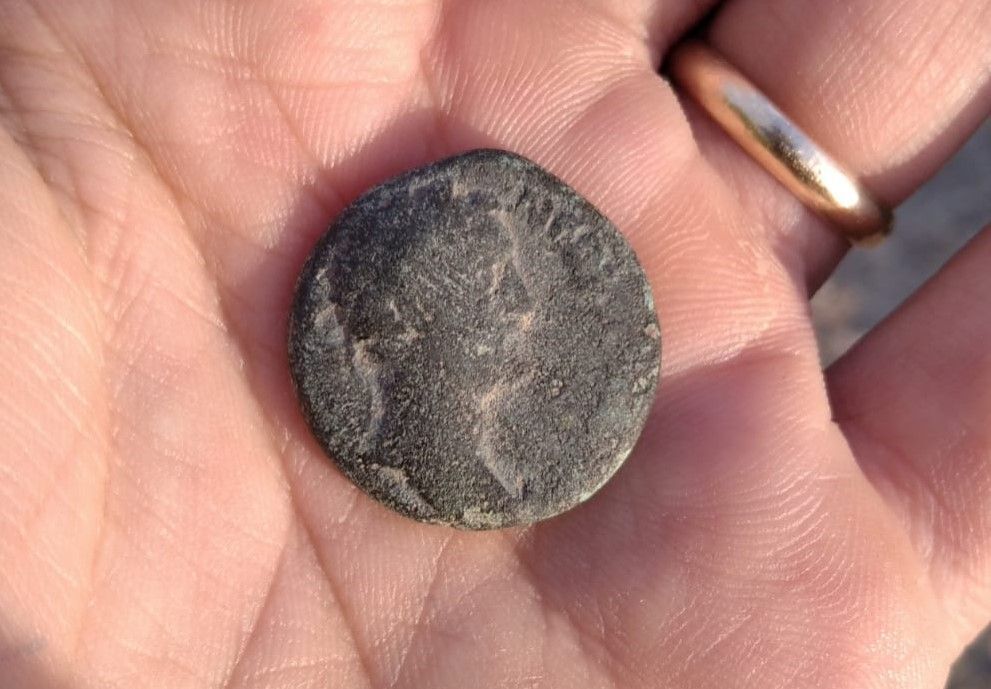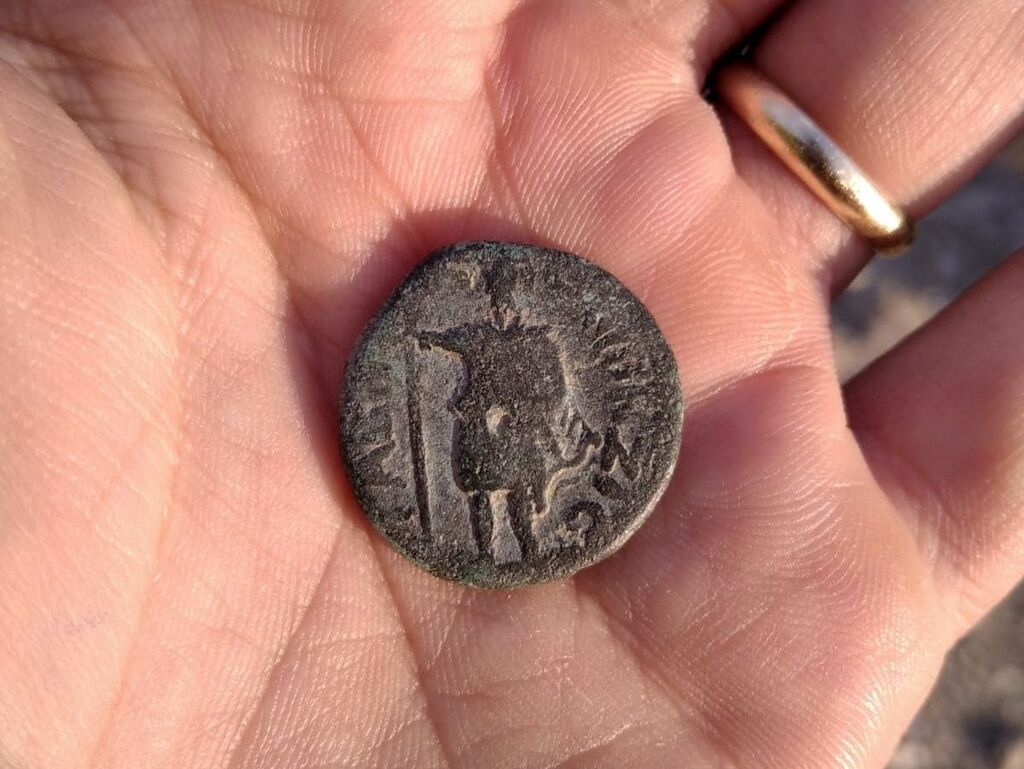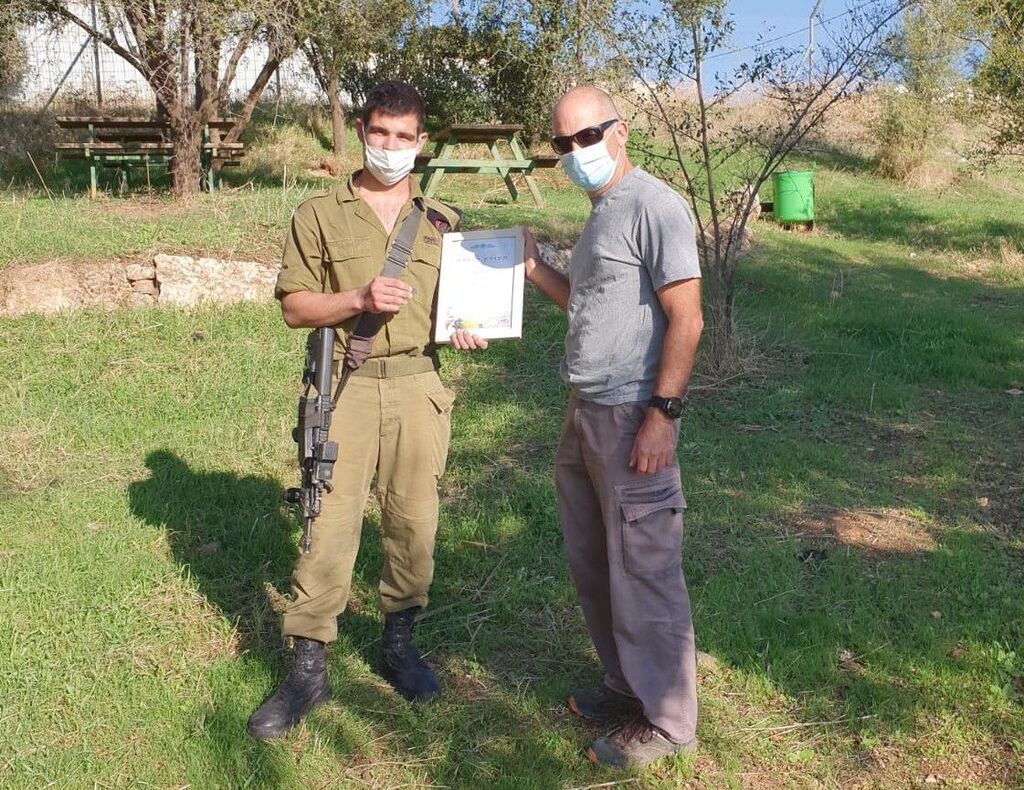IDF soldier Ido Gardi was in the middle of a military exercise on the slopes of Mount Carmel in northern Israel when he noticed an unusual object on the ground. It was an ancient and rare coin, bearing the head of a prominent Roman emperor and dating from 158–159 CE.
Dr. Donald Tzvi Ariel, head of the Israel Antiquities Authority’s (IAA) Numismatics Department, said the coin is only one of 11 the National Treasures Department has in its collection. "All the coins were found in northern Israel, from Megiddo and Zippori to Tiberias and Arbel,” he said.
3 View gallery


Obverse side of the coin, bearing the head of Roman emperor Antoninus Pius
(Photo: Israel Antiquities Authority)
On its obverse, the coin bears the head of the Roman emperor Antoninus Pius, who ruled in 138–161 CE, while the reverse shows the Syrian god MEN (the moon god).
Dr. Avner Ecker, lecturer in classical archaeology at Bar-Ilan University’s Department of Land of Israel Studies and Archaeology, explained that the coin is one of the municipal coins minted in the city of Geva Philippi, also known as Geva Parashim (known as "City of Horsemen" because Herod settled his cavalry forces there).
In the Roman period, cities, known as poleis, were granted the right to mint their own coins. The year marked on the coin is the year when the municipal council was established and its citizens were allowed to govern themselves under the Roman Empire.
3 View gallery


Reverse side of the coin showing the Syrian Moon-god Men
(Photo: Israel Antiquities Authority)
Geva is an ancient settlement, referred to by Josephus as a town located on the foothills at the edge of the Jezreel Valley. In the Great Revolt, in 66–70 CE, local and Roman forces set out from there to fight Jewish rebels near Bet She‘arim.
Excavations conducted by Bar Ilan University at the site last summer unearthed remains of fortifications and buildings dating from the Hellenistic to the Byzantine period.
Nir Distelfeld, an inspector for the IAA Northern District’s robbery prevention unit, estimated that the coin was probably lost by its owner on one of the ancient roads - until the IDF soldier spotted it almost 2,000 years later.
3 View gallery


Ido Gardi awarded a certificate of appreciation for good citizenship from IAA inspector Nir Distelfeld
(Photo: Israel Antiquities Authority)
“This is an opportunity to call on any members of the public who have found coins, or any other ancient artifacts, to report them to the Israel Antiquities Authority,” he said.
He stressed that antiquities are national treasures, it is forbidden to actively seek them, and any finds must be reported to the authority.
"Gardi demonstrated exemplary civic behavior and we hope that he will act as an example for others who discover ancient finds,” said Distelfeld.
Gardi was awarded a certificate of appreciation for good citizenship.

